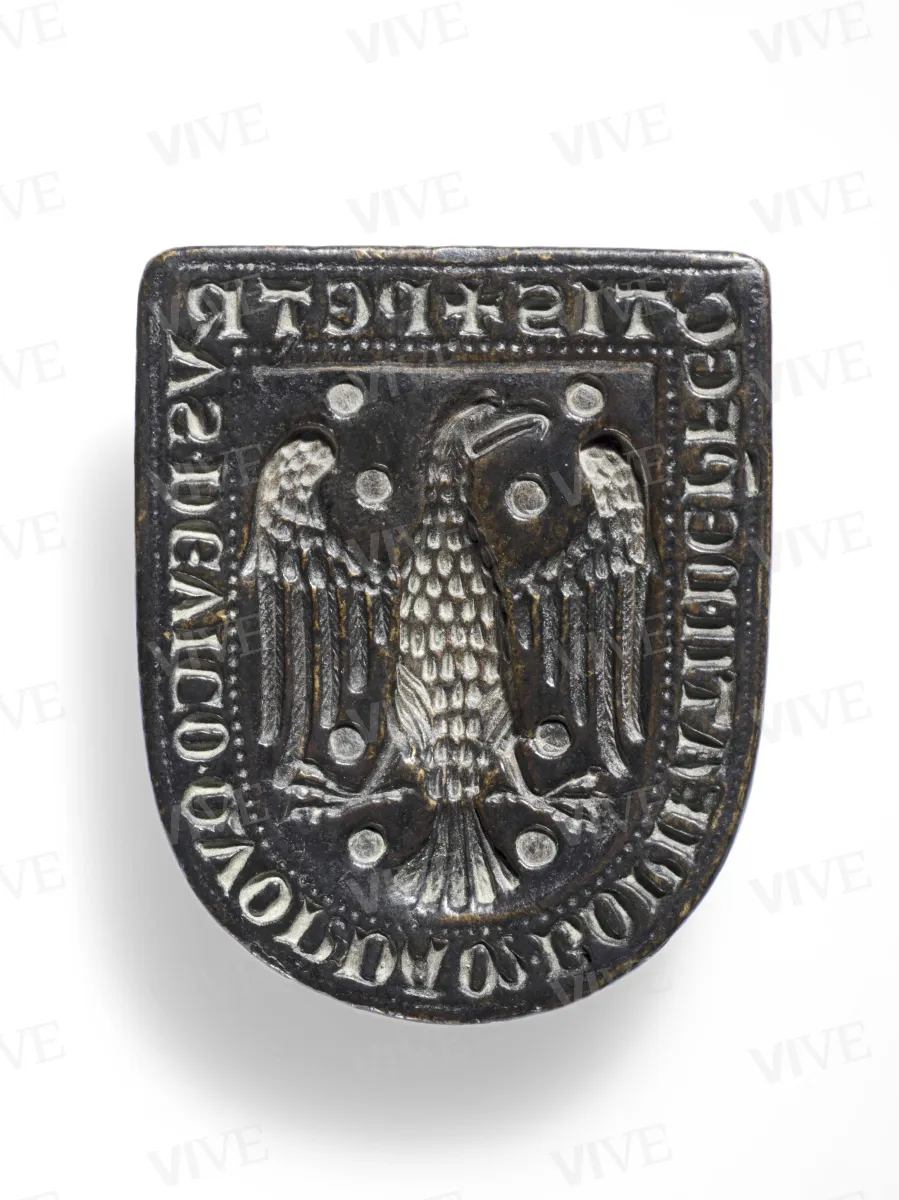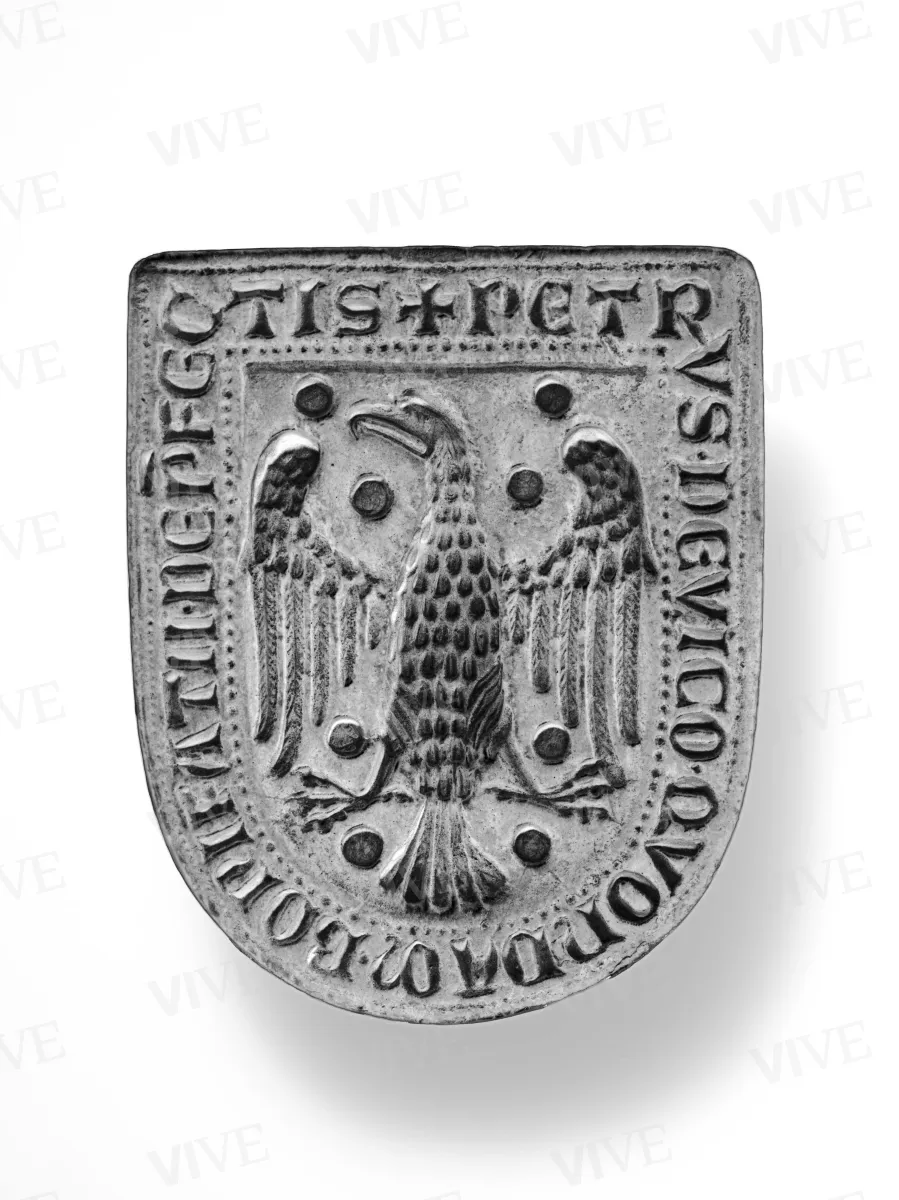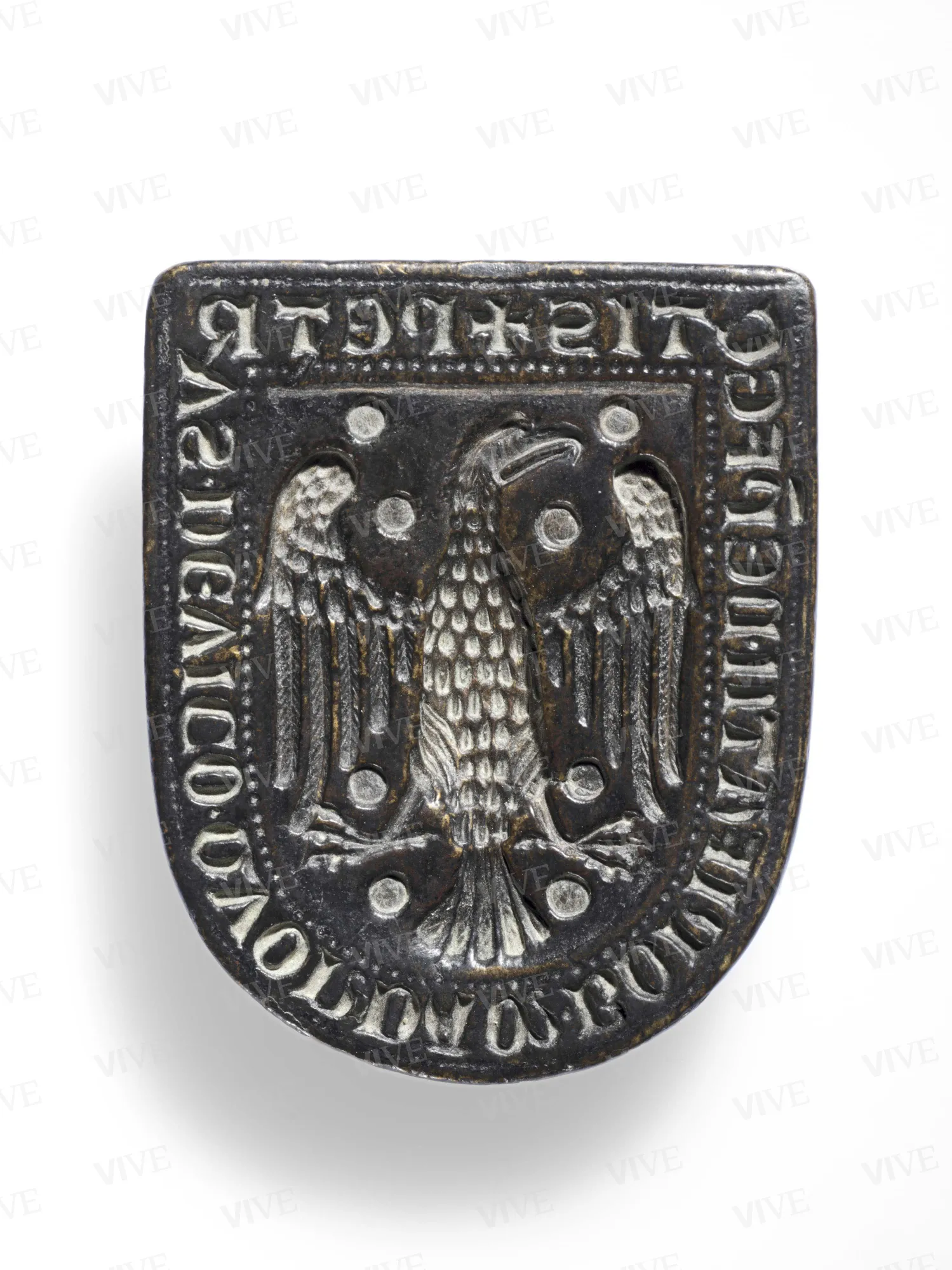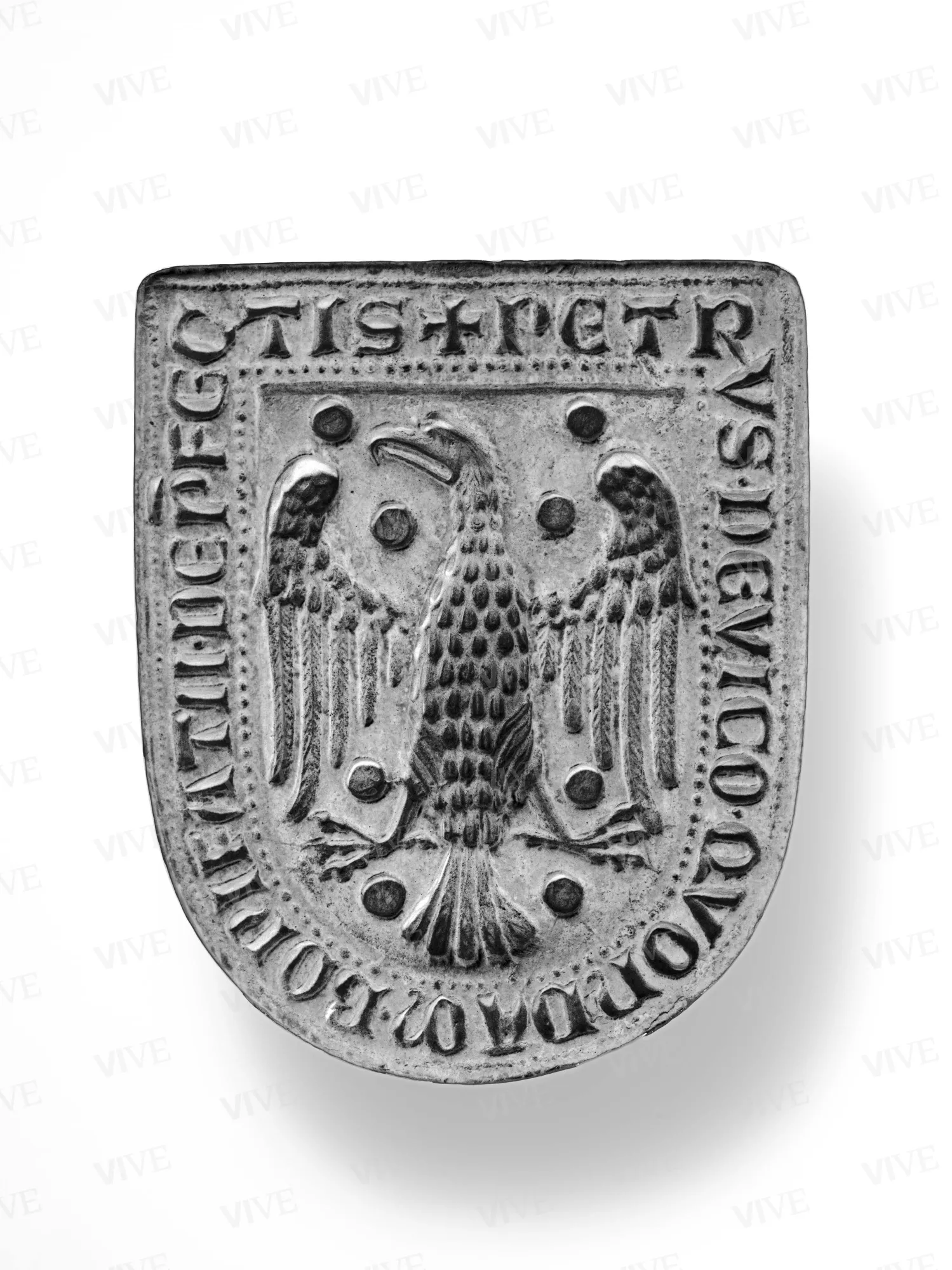Seal matrix of Peter of Vico
Italian production Second half of 13th century
Shield-shaped seal matrix whose perimeter contains the legend “Petrus de Vico quondam Bonifatii de Prefectis.” The field is occupied by an eagle, standing and front-facing, wings spread and lowered, its profiled head facing left. Surrounding it are four spheres at the top and four at the bottom. The coat of arms is that of the seal owner, a member of the Vico family.
Shield-shaped seal matrix whose perimeter contains the legend “Petrus de Vico quondam Bonifatii de Prefectis.” The field is occupied by an eagle, standing and front-facing, wings spread and lowered, its profiled head facing left. Surrounding it are four spheres at the top and four at the bottom. The coat of arms is that of the seal owner, a member of the Vico family.
Details of work
Catalog entry
Shield-shaped seal matrix with hook on reverse, the perimeter of which contains a legend, in uncial script, framed by two narrow lines punctuated by pearl-like elements: “+PETRVS.DE VICO.QVONDAM.BONIFATII.DE PFECTIS,” which can be expanded to “Petrus de Vico quondam Bonifatii de Prefectis.” The field is occupied by an eagle, standing and frontal, wings spread and lowered, its profiled head facing left. Surrounding it are four spheres at the top and four at the bottom. The coat of arms is that of the seal owner, a member of the Vico family. Bascapé (1969) maintained that the owner is Peter IV, who lived in the second half of the thirteenth century, and is probably the Peter mentioned in a document concerning the Viterbo Dominican convent of Santa Maria in Gradi. Particularly valid is a comparison with the burial monument of Cardinal Pietro di Vico now in San Francesco alla Rocca in Viterbo but formerly located in the Dominican convent of the same city (Gardner 1975), in whose casket—somewhat ruined during the bombings of the Second World War—a sequence of three clipei containing the same coat of arms affixed in the seal matrix is still visible (the casket is, however, reproduced in its entirety in a seventeenth-century drawing held in the Biblioteca Albertina in Turin, Herklotz 1985). The only difference between the two coats of arms is the number of spheres: there are seven in the Viterbo coat of arms and eight in the seal. Bascapé (1969) maintains that the peculiarity of the eagle facing left, according to the iconographic usage of the Guelphs, derives from an error by the engraver: in reality the one depicted is an imperial eagle in keeping with the policy of the family of the prefects of Vico, who were imperial representatives (Benocci 1998). Amayden-Bertini (1915) interprets the spheres of the Vicos’ weapon as the loaves given as a tribute by each bakery to the prefects of Rome (who were responsible for the public grain supply).
Chiara Paniccia
Entry published on 12 February 2025
State of conservation
Good.
Inscriptions
«+PETRVS.DE VICO.QVONDAM.BONIFATII.DE PFECTIS»
Coats of arms, emblems, and marks
The Vico coat of arms: eagle, standing and front-facing, wings spread and lowered, whose profiled head is facing left. Arranged around it are four spheres above and four below.
Provenance
Roman Collezione Corvisieri, 1903-1905.
Exhibition history
Rome, Castel Sant’Angelo, Esposizione internazionale di Roma, February 1911;
Rome, Palazzo Venezia, Bonifacio VIII e il suo tempo. Anno 1300 il primo giubileo, April 12–July 16, 2000.
References
Inventario dei sigilli Corvisieri, catalogo dell'Esposizione internazionale di Roma 1911. Mostre retrospettive in Castel S. Angelo, catalogo della mostra (Roma, Castel Sant'Angelo, febbraio 1911, Roma 1911, p. 13;
Amayden Teodoro, Bertini Augusto, Storia delle famiglie romane, Roma 1915, II, p. 229;
Hermanin Federico, Il Palazzo di Venezia, Roma 1948, p. 309;
Bascapé Giacomo, Sigillografia. Il sigillo nella diplomatica nel diritto, nella storia, nell'arte, Milano 1969 (1961), p. 386;
Gardner Julian, Some Cardinals' Seals of the Thirteenth Century, in «Journal of the Warburg and Courtauld Institutes», 38, 1975, pp. 71-96;
Herklotz Ingo, "Sepulcra" e "Monumenta" del Medioevo, Roma 1985, pp. 168-169;
Benocci Carla,Pietro del fu Bonifacio dei Prefetti di Vico, in Balbi De Caro Silvana, Benocci Carla (a cura di), La collezione sfragistica. Il Medagliere del Museo del Palazzo di Venezia, Roma, Museo nazionale del Palazzo di Venezia, I, Roma 1998, p. 73, n. 67;
Strinati Tommaso, Matrice del sigillo di Pietro di Vico, in Righetti Tosti-Croce Marina (a cura di), Bonifacio VIII e il suo tempo. Anno 1300 il primo giubileo, catalogo della mostra (Roma, Palazzo Venezia, 12 aprile-16 luglio 2000), Milano 2000, p. 231, n. 180.














